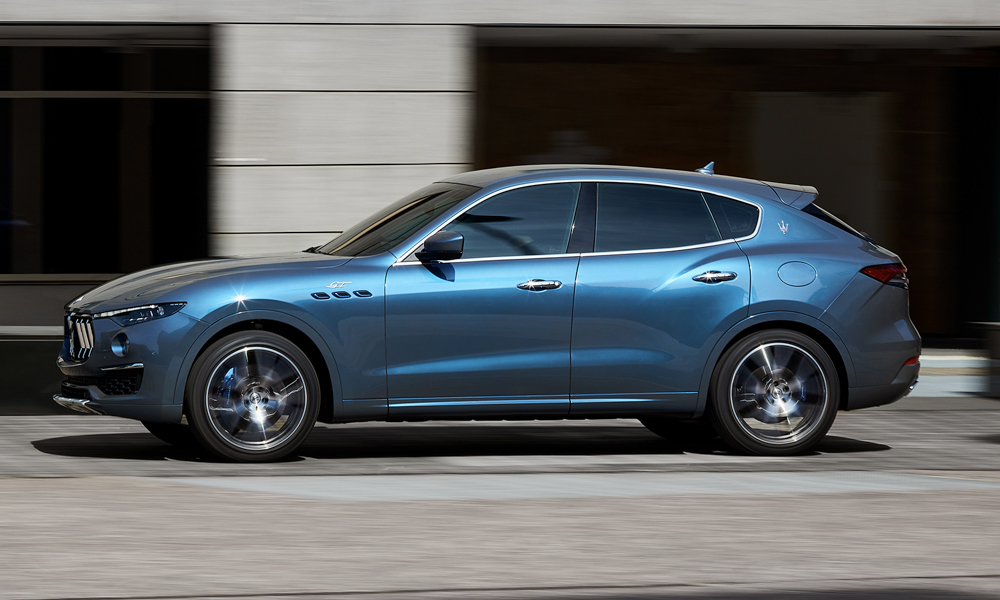
Lightning has struck the trident badge once again, initiating another step forward toward a new era of electrified power for Maserati. This comes in the form of the Levante Hybrid, the Italian marque’s first SUV receiving a mild-hybrid system after the introduction of the Ghibli Hybrid sports sedan last year.



Maserati’s most successful offering to date has now embraced the future of mobility, improving environmental standards and fuel efficiency without compromising the luxurious feel it is known for. The Levante Hybrid is equipped with a turbocharged 2.0-liter four-cylinder engine paired with a 48V mild-hybrid system serving a total of 330hp and 450Nm. Power is delivered by a ZF eight-speed automatic gearbox and an all-wheel drive system with a rear self-locking mechanical limited-slip differential. The Levante Hybrid can accelerate from zero to 100km/h in just six seconds and top out at over 240km/h.



The Maserati 48V belt starter generator is a major part of the regenerative process, feeding the hybrid battery with energy captured from vehicle deceleration or braking. The battery and a DC/DC converter deliver that stored electrical power back to an eBooster supercharger to help propel the vehicle. Aside from the vehicle’s overall technical design, the Levante Hybrid powertrain’s weight is evenly distributed, enhancing the vehicle’s agility and braking performance (100-0km/h in just 36m).
Where fuel efficiency and emission standards are concerned, the Levante Hybrid is certainly greener and more efficient. According to Maserati’s product-planning head, Francesco Tonon, carbon-dioxide emissions are reduced by 18% and 3% from gasoline and diesel versions, respectively. He also claims that the Levante Hybrid is faster than its oil-burning sibling.


Retaining Maserati’s dedication to performance, the mild-hybrid direction turned out to be more ideal than a plug-in hybrid setup. Since the fun-to-drive nature of the Levante is important to Maserati customers, using a much heavier plug-in hybrid system would have placed a bigger burden on the vehicle—affecting weight distribution and performance, as a result. The combination of the lighter hybrid system and a small-displacement turbocharged engine (an impressive 165hp/L) provides the best balance of power and weight. The Levante Hybrid is 20kg lighter than its gas-powered version and 115kg lighter than its diesel-fed sibling.
To address concerns regarding the popular Maserati roar we all love, engineers have made some clever enhancements without using amplifiers or artificial noises. Instead, the fluid dynamics of the exhaust system have been tweaked, and resonators were incorporated to churn out that distinct Maserati sound.


Innovative tech is a big part of the Levante Hybrid ownership experience. The Maserati Connect suite has been integrated into the vehicle’s infotainment system. With the help of a compatible phone or smartwatch app, users can keep track of the vehicle’s health, security and servicing needs. This can even be done through the comfort of one’s home via a virtual personal assistant utilizing Google Assist or Amazon Alexa.
To set the Levante Hybrid apart from its conventional stablemates, some distinguishing features have been integrated into its exterior and interior. The launch unit showcases a new metallic tricolor finish called Azzuro Astro, a livery available through Maserati’s customization program. On the bodywork, the C-pillar logo, the front-fender air ducts, and the brake calipers are highlighted in light blue, signifying the vehicle’s hybrid nature. In the cabin, the contrast stitching is done in blue as well.

The electrified age is looking to be an exciting transition especially in the luxury performance segment. The Levante Hybrid is proof of Maserati’s dedication to a more thrilling yet sustainable future for the Modena-based brand.











Comments